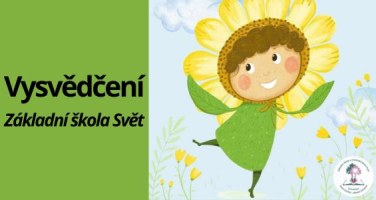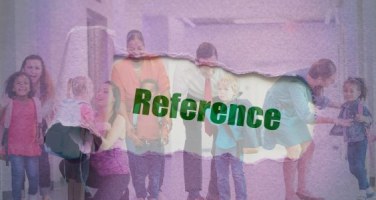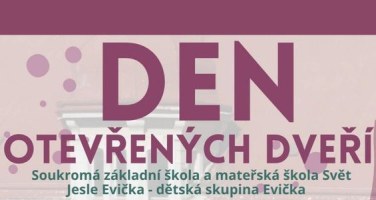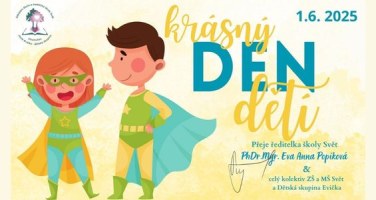Aktuálně
Informace pro rodiče: Jídelníček

Vysvědčení a přání k letním prázdninám
24.06.2025 - Milí žáci, rodiče a přátelé školy, školní rok 2024/2025 se blíží ke svému závěru. Vysvědčení si žáci ZŠ Svět slavnostně ...

Letní provoz MŠ Svět a jeslí Evička
24.06.2025 - Vážení rodiče, během letních měsíců upravujeme provoz naší mateřské školy a dětské skupiny Evička. Prosíme, věnujte pozornost ...

Reference rodičů: proč je Škola Svět tou pravou volbou
04.06.2025 - Věříme, že nejlepší vizitkou školy jsou spokojení žáci a jejich rodiče. A právě jejich slova potvrzují, že ve Škole Svět děláme ...

Vaše dítě si zaslouží víc – den otevřených dveří v ZŠ Svět
04.06.2025 - 🎒 Vaše dítě si zaslouží víc než jen „přežít školu“Přijďte na Den otevřených dveří v ZŠ Svět 10. a 11. června 2025 ...

Den dětí ve Škole Svět – oslavujeme radost, smích a dětské sny
01.06.2025 - 🎉 Všechno nejlepší ke Dni dětí!Děti jsou srdcem naší školy – každý den nám připomínají, jak krásné je dívat se na svět ...
Jesle Evička - dětská skupina
Rodinná atmosféra, individuální péče a bezpečné prostředí – tak začíná první krok dítěte do světa poznávání.
Naše moderní výukové metody
🟢 Ostrov objevů – hravé a interaktivní učení podporující dětskou zvědavost.
🟠 Montessori metoda – rozvoj samostatnosti a kreativity pomocí praktických aktivit.
🔵 NTC Learning – inovativní herní metody pro rozvoj inteligence a efektivní učení.
Přijďte se podívat, jak vytváříme láskyplné a podnětné prostředí pro nejmenší! 😊


Mateřská škola Svět
Rober Fulghum kdysi napsal: "Všechno, co opravdu potřebuji znát, jsem se naučil v mateřské školce." A my s tím naprosto souhlasíme.
V naší MŠ se učíme, že je v pořádku zeptat se, když něčemu nerozumíme. Že je důležité podělit se s kamarádem o hračku. Že když někdo spadne, pomůžeme mu vstát. Že každý den je šance na nový začátek, a že i malý úsměv může změnit celý den.
Víme, jak těžké je svěřit své dítě do cizích rukou. Proto jsme školkou, která je pro děti druhým domovem. Místem, kde je bezpečno, kde se budují vztahy a kde se každý den dějí malé zázraky.
Vaše děti učíme milovat život. A hlavně – učíme je milovat samy sebe a ostatní.
Individuální přístup je u nás samozřejmostí. V naší školce věříme na šťastné děti, které se nebojí být samy sebou.
Základní škola SVĚT
Dobrá škola je ta, která se neustále přizpůsobuje měnícím se podmínkám a připravuje děti na život v moderní společnosti.
Škola dnes neslouží pouze jako zdroj informací, ale klade si za úkol připravit žáky pro budoucí život.
Více informací


Základní škola SVĚT - Individuální vzdělávání
Chcete mít větší vliv na vzdělávání svého dítěte a zároveň trávit více času společně? Individuální vzdělávání je skvělé řešení!
Individuální vzdělávání je plnění povinné školní docházky na 1. a 2. stupni základní školy bez pravidelného denního docházení žáka do základní školy. Jedná se o alternativní způsob vzdělávání, který se těší stále větší oblibě. Je třeba zdůraznit, že podle školského zákona individuálně vzdělávaný žák koná za každé pololetí pouze zkoušky z příslušného učiva, a to ve škole. Po dobu individuálního vzdělávání žáka za plnění podmínek odpovídá zákonný zástupce žáka.
O povolení individuálního vzdělávání rozhoduje pouze ředitelka školy, kam je žák přijat k plnění povinné školní docházky.
Naši sponzoři
Chcete se stát také naším sponzorem? Napište nám na reditelzsmssvet.cz a připojte se k nám v podpoře kvalitního vzdělávání!

Autobusová doprava, sponzoring - Martina Uhlířová a Martin Boček
Uložte si důležité termíny
Den otevřených dveří
- 📅 1. 7. - 20. 7. 2025 Provoz uzavřen – Stáhnout do kalendáře
- 📅 Po 1. 9. 2025 Začátek vyučování 2025/2026 – Stáhnout do kalendáře
- 💻 Info + rezervace
















